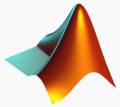Matlab Tutorial : Indexing & Masking

>> M = [1 2 3; 4 5 6; 7 8 9]
M = 1 2 3
4 5 6
7 8 9
We can access individual element by specifying (row, column):
>> M(2,3)
6
Also, note that Matlab is using 1-based index not 0-based index.
>> 1:4
ans =
1 2 3 4
We can take a portion of matrix using slice.
>> M = [1:20]
>> M2 = reshape(M,4,5)
1 5 9 13 17
2 6 10 14 18
3 7 11 15 19
4 8 12 16 20
>> M2(1:4, 3:4)
9 13
10 14
11 15
12 16
We took all rows and 3rd and 4th columns.
When we takes all rows or columns, we don't have to use specific indices, and we can use this form:
>> M2(:,3:4)
9 13
10 14
11 15
12 16
The following example assigns value of the last three element to the first three elements:
>> v = 10:10:100
10 20 30 40 50 60 70 80 90 100
>> v(1:3) = v(8:10)
80 90 100 40 50 60 70 80 90 100
>> a = 10:10:100
10 20 30 40 50 60 70 80 90 100
>> index = [1 10 5 7 9]
1 10 5 7 9
>> b = a(index)
10 100 50 70 90
In the code, we made a new array by using array as subscripts to the source array.
We can compare each element with a value, and the output is a type of boolean not double:
>> a = 1:10
1 2 3 4 5 6 7 8 9 10
>> b = a < 7
1 1 1 1 1 1 0 0 0 0
We can use this to make another array:
>> new_a = a(a<7)
1 2 3 4 5 6
The operation only takes elements that a<7 is true. Since we have a new array b, we can get the same result by doing this:
>> new_a = a(b)
1 2 3 4 5 6
However, we cannot do this:
>> b2 = [1 1 1 1 1 1 0 0 0 0]
1 1 1 1 1 1 0 0 0 0
>> new_a2 = a(b2)
Subscript indices must either be real positive integers or logicals.
That's because the elements of b2 is not a boolean but a double type.
We can assign a value to only an element that the mask has true value:
>> a = [0 1 2 3]; >> mask = [true false true false]; >> a(mask) = [100 102] a = 100 1 102 3
Let's see how the masking changes the size of an array:
>> a = 0:10:100
0 10 20 30 40 50 60 70 80 90 100
>> mask = a < 80
1 1 1 1 1 1 1 1 0 0 0
>> a(mask)
0 10 20 30 40 50 60 70
But we want to keep the size of an array unchanged while we can still applying the mask. We can achieve this by using dot(.) meaning every element:
>> a.*mask
0 10 20 30 40 50 60 70 0 0 0
What it is doing is a element-wise multiplication with the mask!
Ph.D. / Golden Gate Ave, San Francisco / Seoul National Univ / Carnegie Mellon / UC Berkeley / DevOps / Deep Learning / Visualization